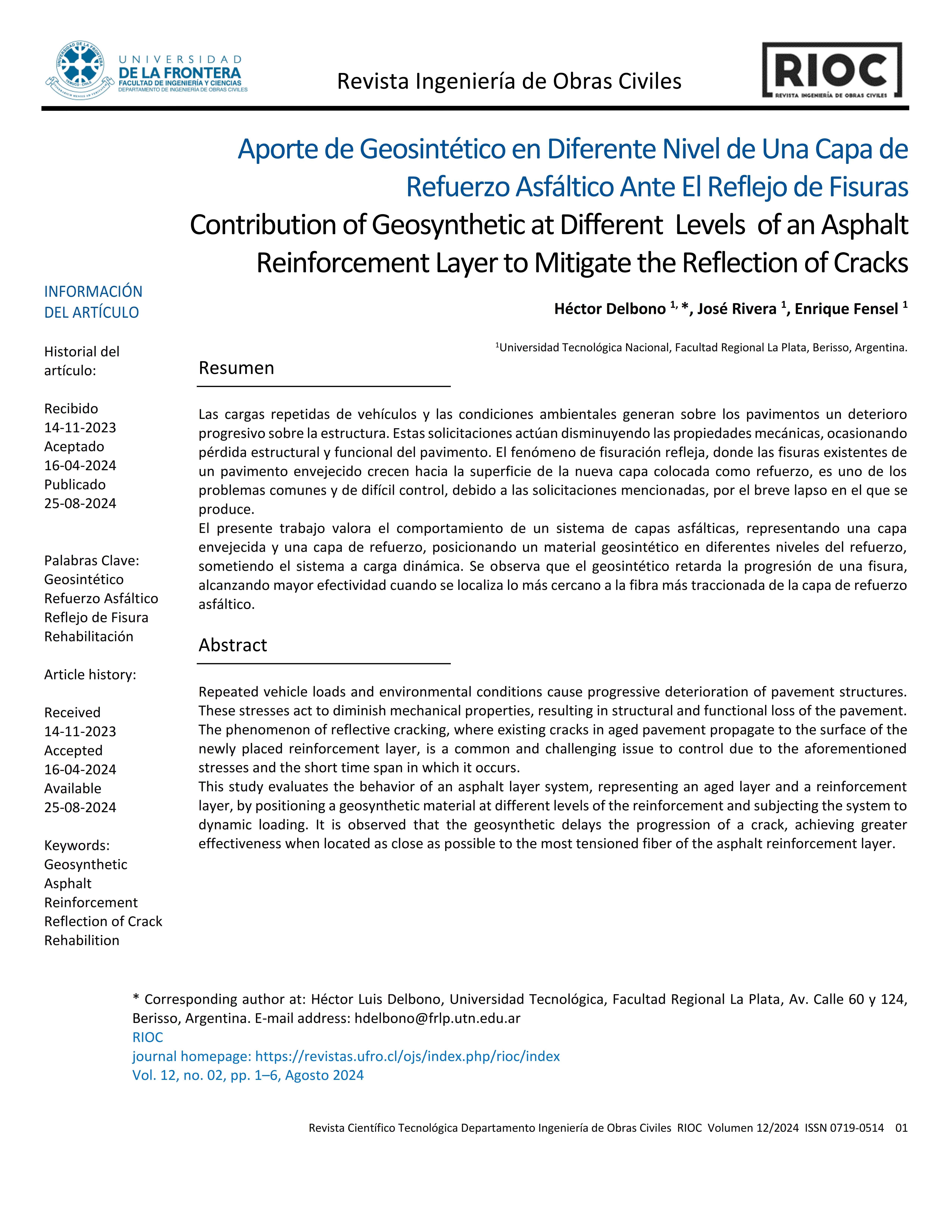Aporte de Geosintético en Diferente Nivel de Una Capa de Refuerzo Asfáltico Ante El Reflejo de Fisuras
Palabras clave:
Geosintético, Refuerzo Asfáltico, Reflejo de Fisura, RehabilitaciónResumen
Las cargas repetidas de vehículos y las condiciones ambientales generan sobre los pavimentos un deterioro progresivo sobre la estructura. Estas solicitaciones actúan disminuyendo las propiedades mecánicas, ocasionando pérdida estructural y funcional del pavimento. El fenómeno de fisuración refleja, donde las fisuras existentes de un pavimento envejecido crecen hacia la superficie de la nueva capa colocada como refuerzo, es uno de los problemas comunes y de difícil control, debido a las solicitaciones mencionadas, por el breve lapso en el que se produce.
El presente trabajo valora el comportamiento de un sistema de capas asfálticas, representando una capa envejecida y una capa de refuerzo, posicionando un material geosintético en diferentes niveles del refuerzo, sometiendo el sistema a carga dinámica. Se observa que el geosintético retarda la progresión de una fisura, alcanzando mayor efectividad cuando se localiza lo más cercano a la fibra más traccionada de la capa de refuerzo asfáltico.
Descargas

Descargas
Publicado
Cómo citar
Número
Sección
Licencia
Derechos de autor 2024 Héctor Delbono , José Rivera , Enrique Fensel

Esta obra está bajo una licencia internacional Creative Commons Atribución 4.0.
Los autores/as que publiquen en esta revista aceptan las siguientes condiciones:
- Los autores/as conservan los derechos de autor y ceden a la revista el derecho de la primera publicación, con el trabajo registrado con la licencia de atribución de Creative Commons, que permite a terceros utilizar lo publicado siempre que mencionen la autoría del trabajo y a la primera publicación en esta revista.
- Los autores/as pueden realizar otros acuerdos contractuales independientes y adicionales para la distribución no exclusiva de la versión del artículo publicado en esta revista (p. ej., incluirlo en un repositorio institucional o publicarlo en un libro) siempre que indiquen claramente que el trabajo se publicó por primera vez en esta revista.
- Se permite y recomienda a los autores/as a publicar su trabajo en Internet (por ejemplo en páginas institucionales o personales) antes y durante el proceso de revisión y publicación, ya que puede conducir a intercambios productivos y a una mayor y más rápida difusión del trabajo publicado (vea The Effect of Open Access).



